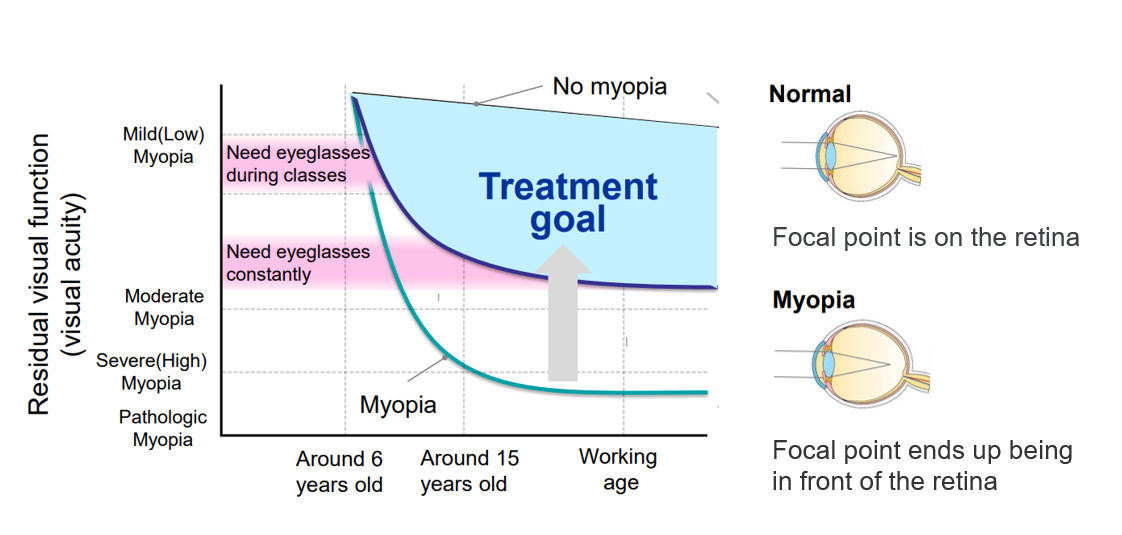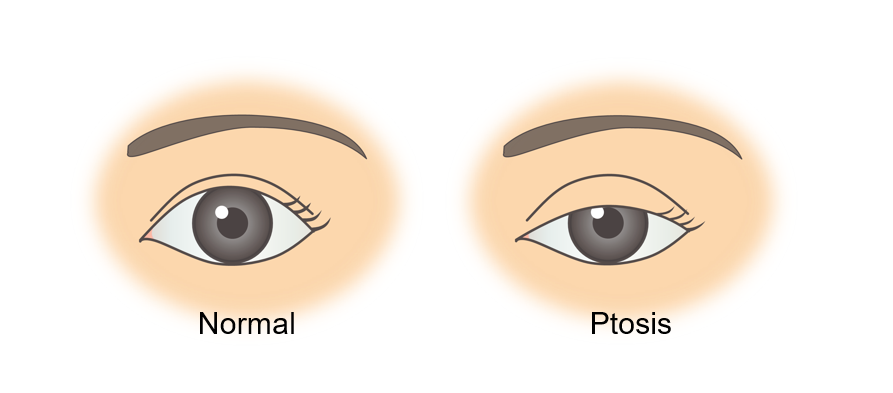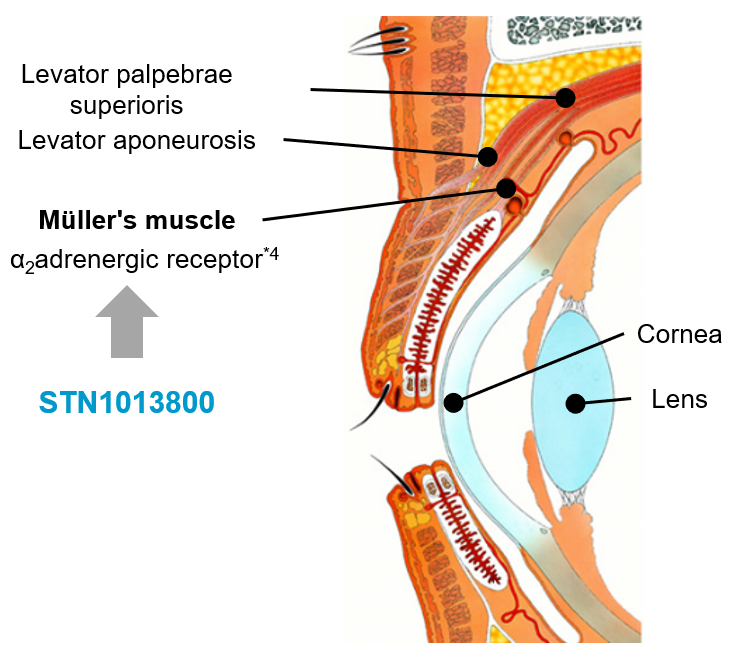Area of Interest
We identify the diseases to be tackled from the disease needs and the maturity of the technologies, and build a disease strategy. Our core business is Age-Related Macular Degeneration (AMD), Allergy, Dry eye and Glaucoma and we have supplied some differentiated products to those markets in order to maximize their value. On the other hand, the new frontier is a more important disease group to achieve for Santen 2030. Those are Myopia, Presbyopia, Ptosis and Retinitis Pigmentosa (RP).
Holistic coverage of ophthalmic area including diseases with limited treatment options
| Core business | AMD* | Allergy | Dry eye | Glaucoma |
| New frontier | Myopia | Presbyopia | Ptosis | Retinitis pigmentosa |
Myopia: Our approach
We are addressing myopia comprehensively by studying the patient journey, understanding how a patient feels from early to late stage with the disease and developing the best-in-class therapeutic options to address patients and their families‘ needs. To protect children from the risk of vision problems with myopia, educational activities in collaboration with key opinion leaders (KOLs) are extremely important. Our initiatives include developing a low concentration atropine formulation along with proper disease awareness activities, a next-generation drug with better efficacy and safety, and to create greater value for patients through collaboration with external partners during drug discovery.
Protecting children from potential risk of vision problems
- Disease awareness activities in collaboration with KOLs
- Development and value maximization of low-dose atropine formulation
- Overcome the challenges of low-dose atropine with next-generation drug
- Collaborative study to accelerate elucidation of pathology and drug discovery
Myopia affects
30% of people in 2020
50% of people in 2050 in the world *1
*1 Ophthalmol. 123, 1036-1042, 2016
Important to prevent progression of myopia at school age

Ptosis: Our approach
Ptosis is a unilateral or bilateral drooping of the upper eyelid that usually occurs from a partial or complete dysfunction of the muscles that elevate the upper eyelid. It can lead to decreased visual fields and lower quality of life (QOL) for patients. Tens of millions of adults are suffering from ptosis globally*2,3. We are developing a novel ophthalmic formulation of oxymetazoline, a direct-acting alpha adrenergic receptor agonist, for the treatment of acquired ptosis. It is reported to selectively target Müller’s muscle and elevate the upper eyelid when administered to the eye.
*2 Age Ageing 24, 21-24, 1995, *3 Eye 31, 940–946, 2017

Protecting patients from defect of visual field and decrease in QOL
- Value maximization and region expansion of STN1013800
- Educational activities
The anterior segment of the eye

*4 Ophthalmic Plast Reconstr Surg 15, 92-99. 1999